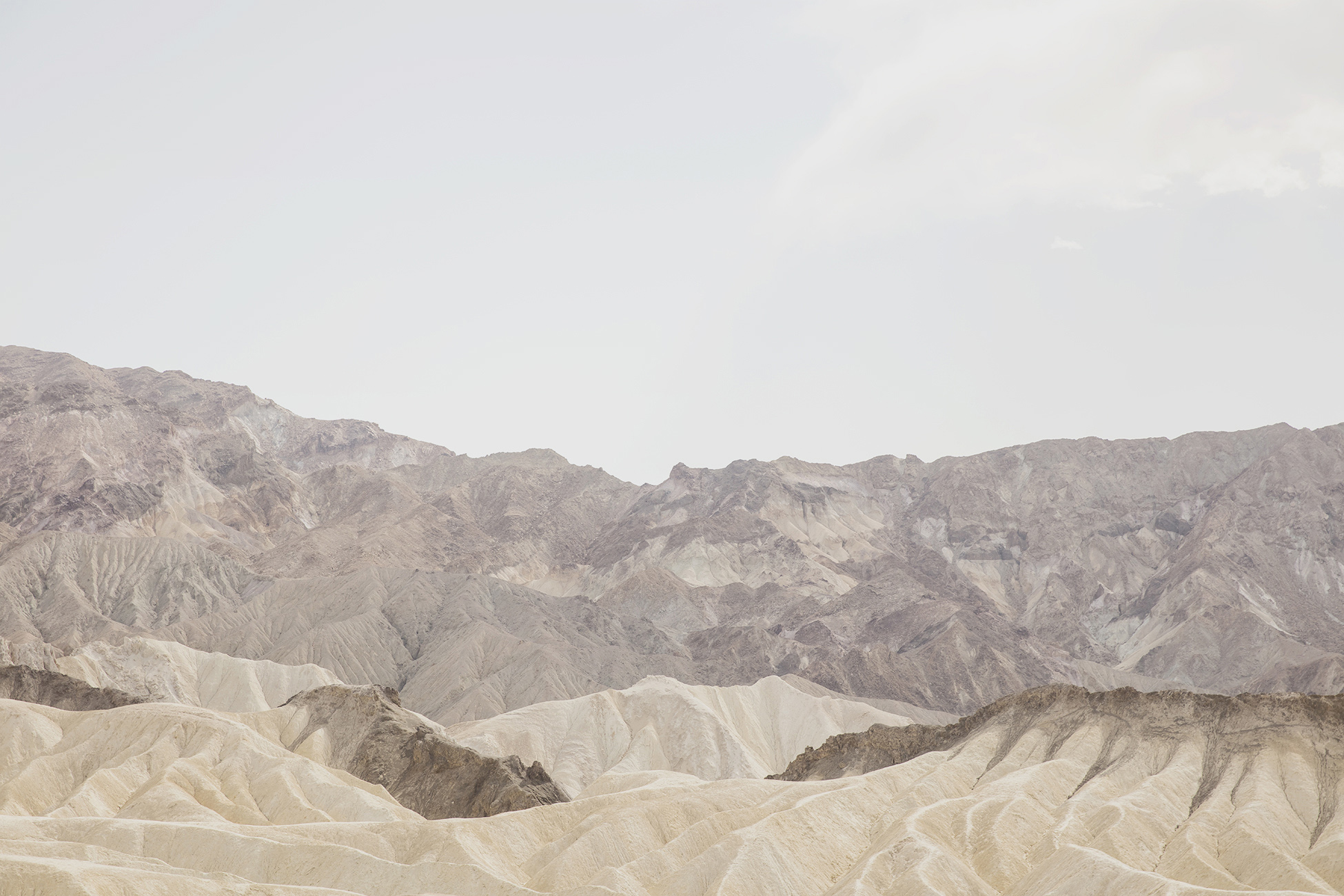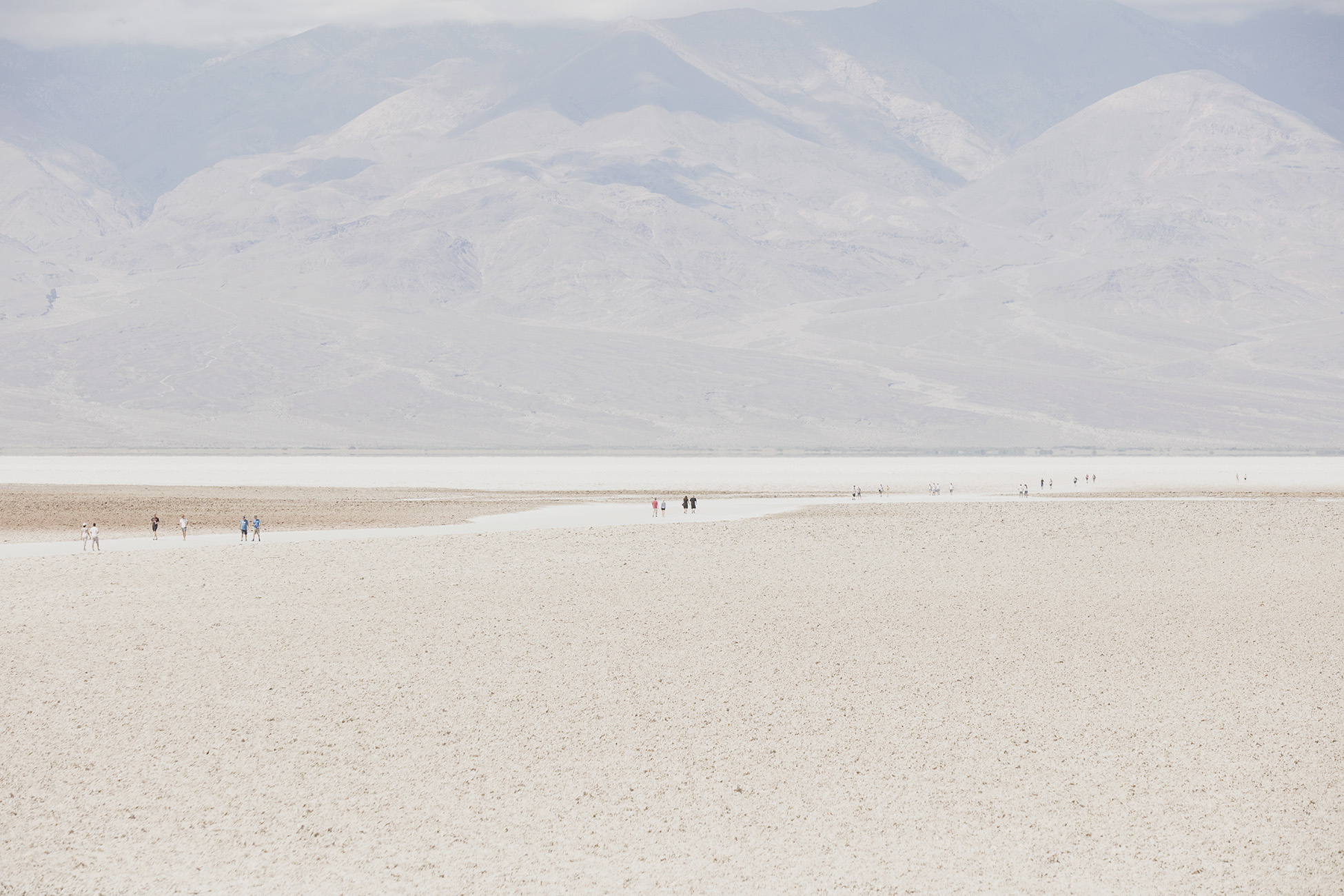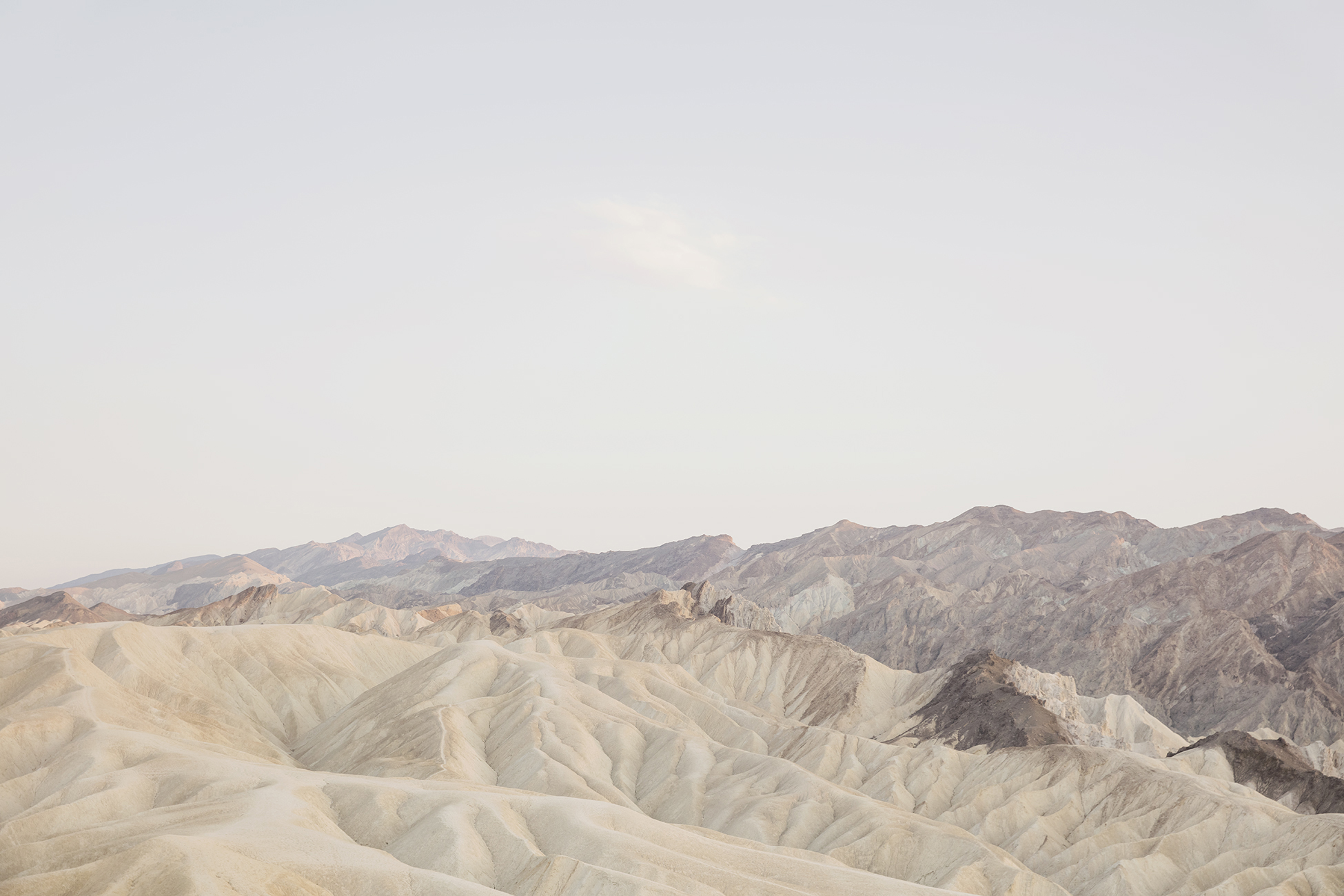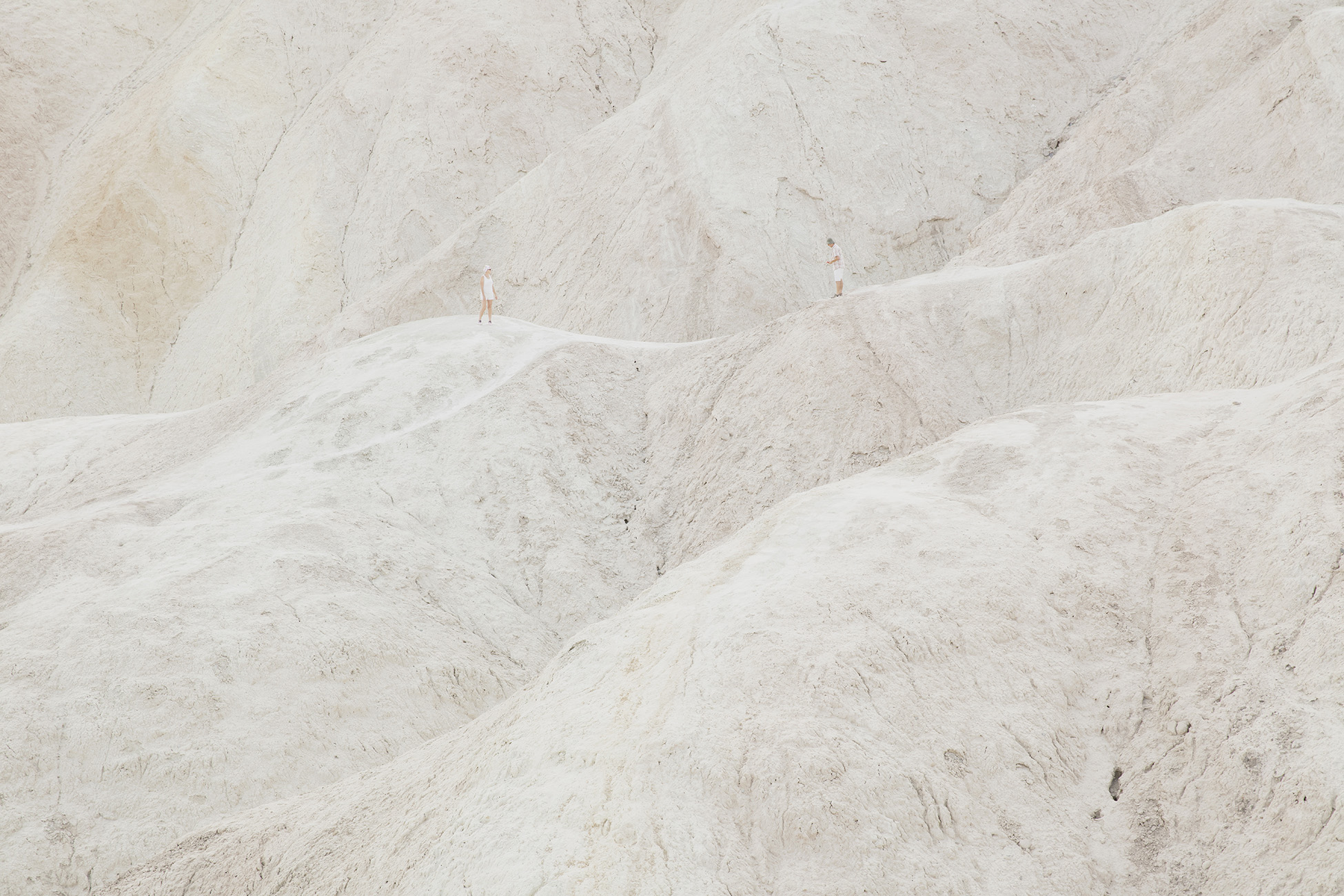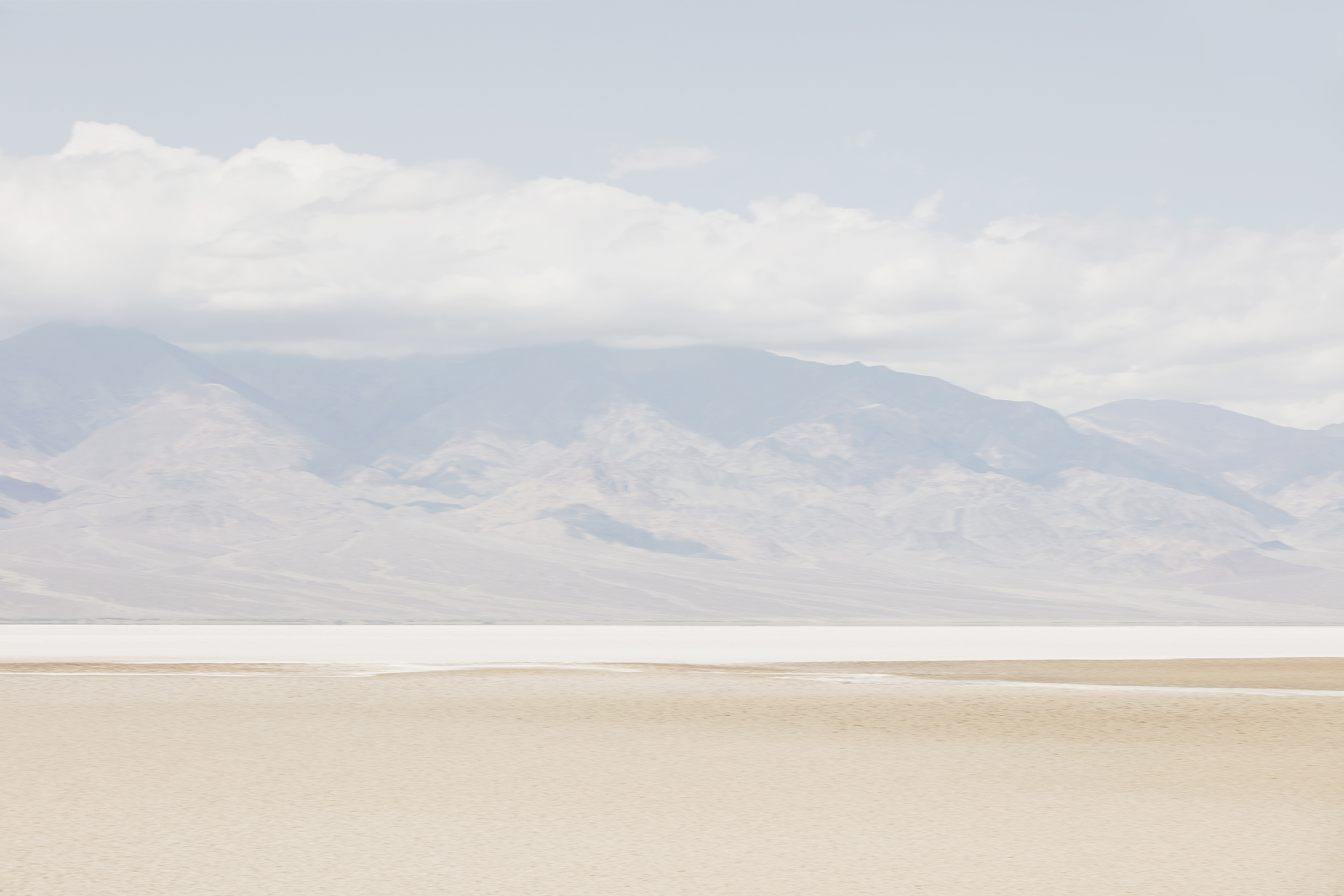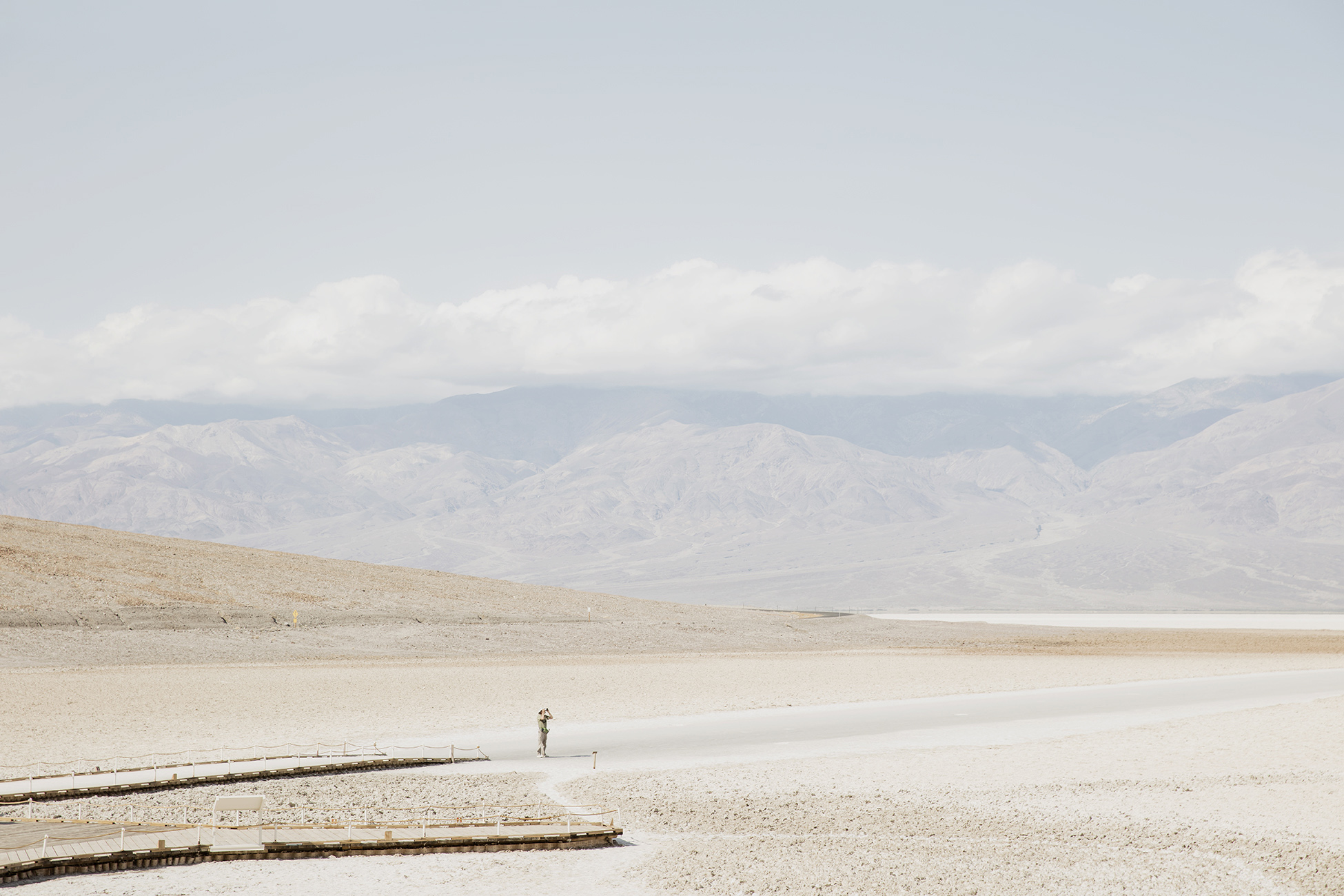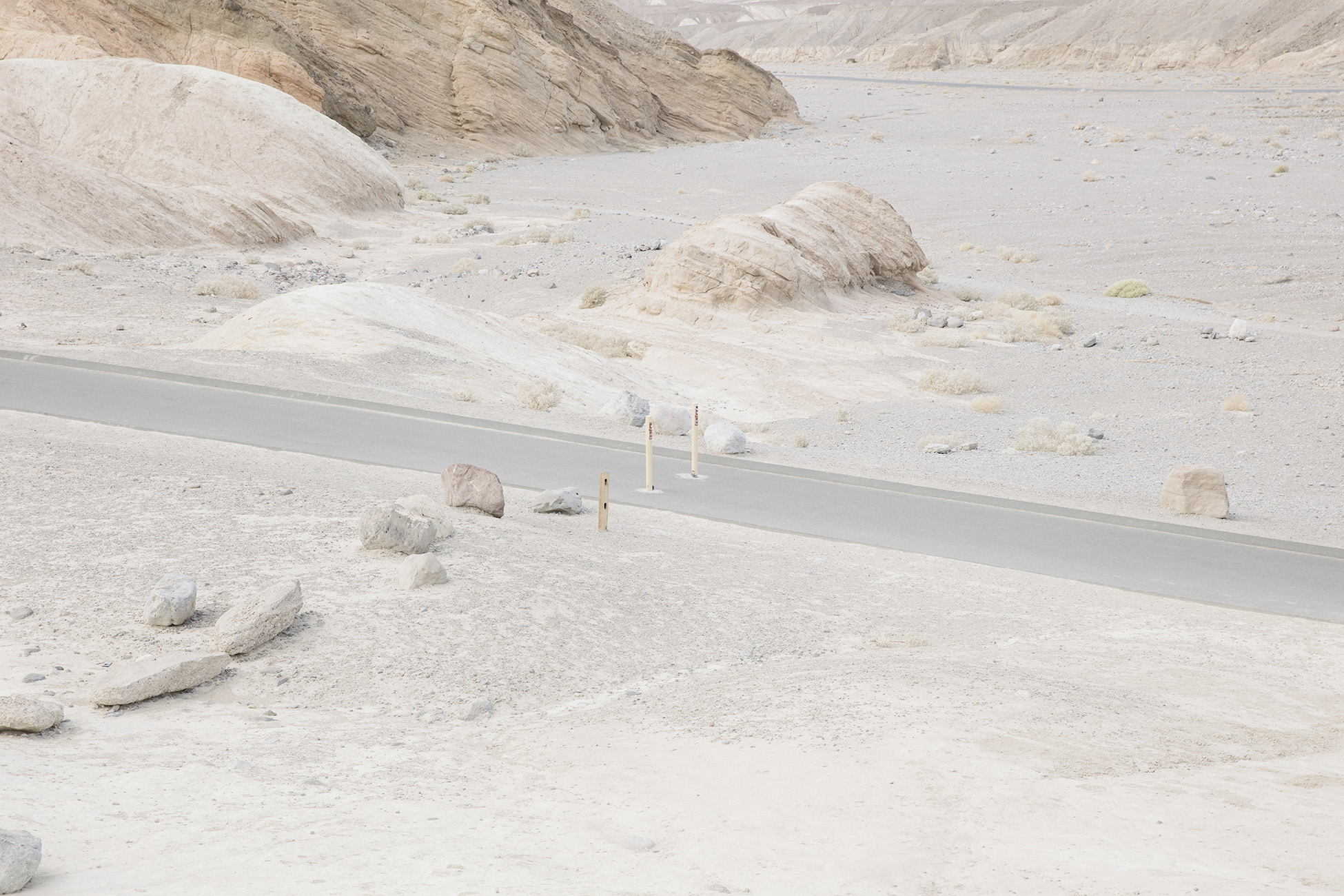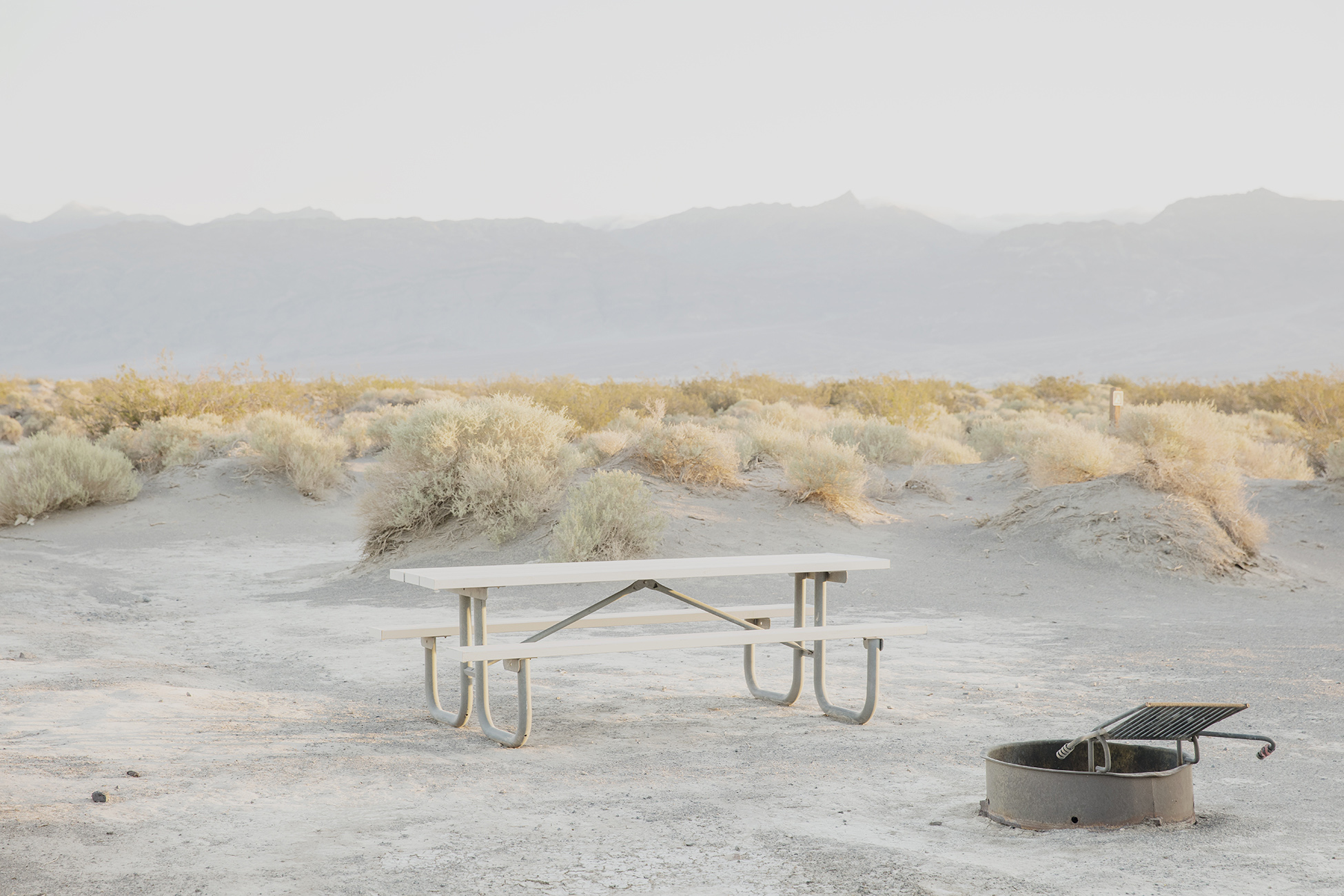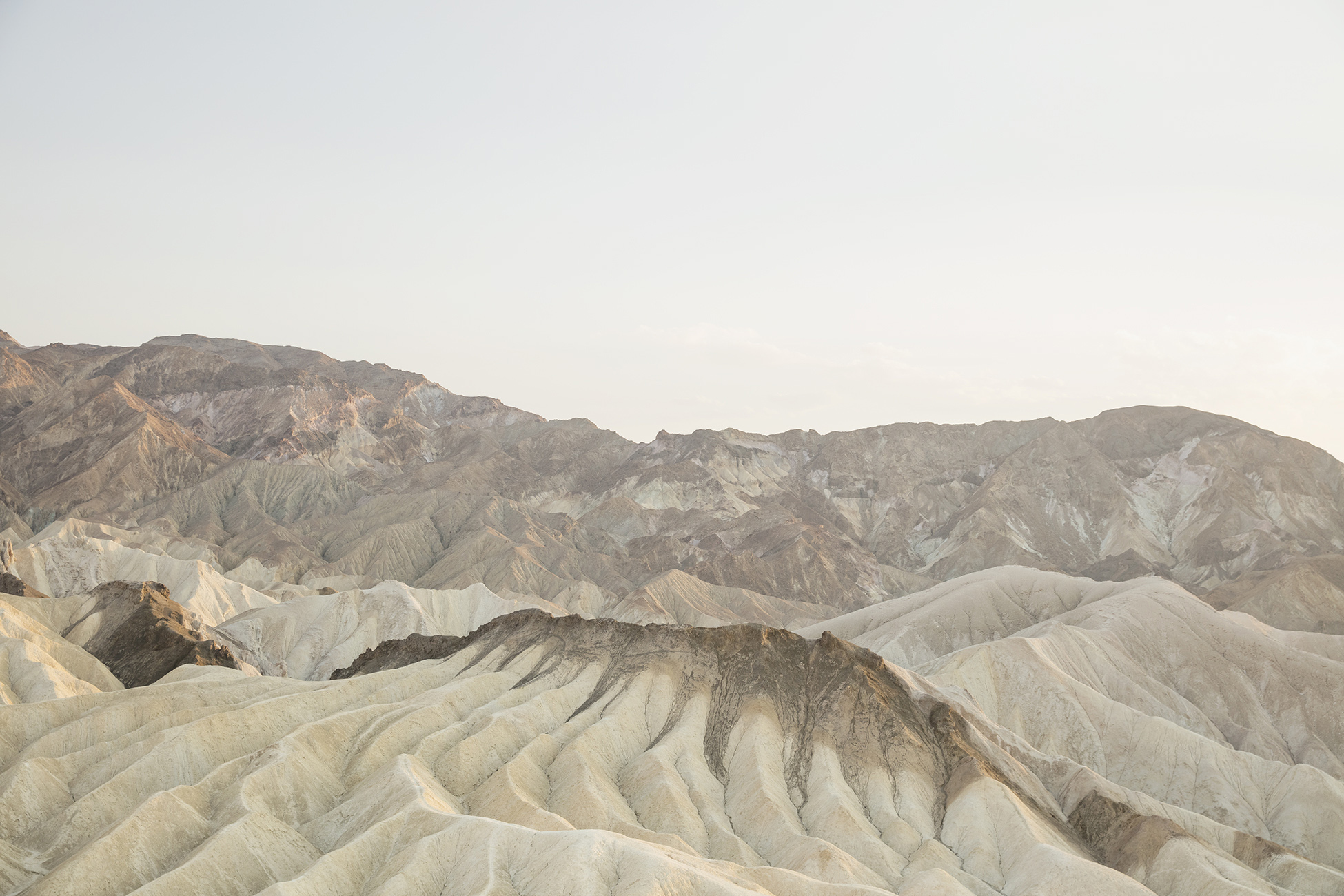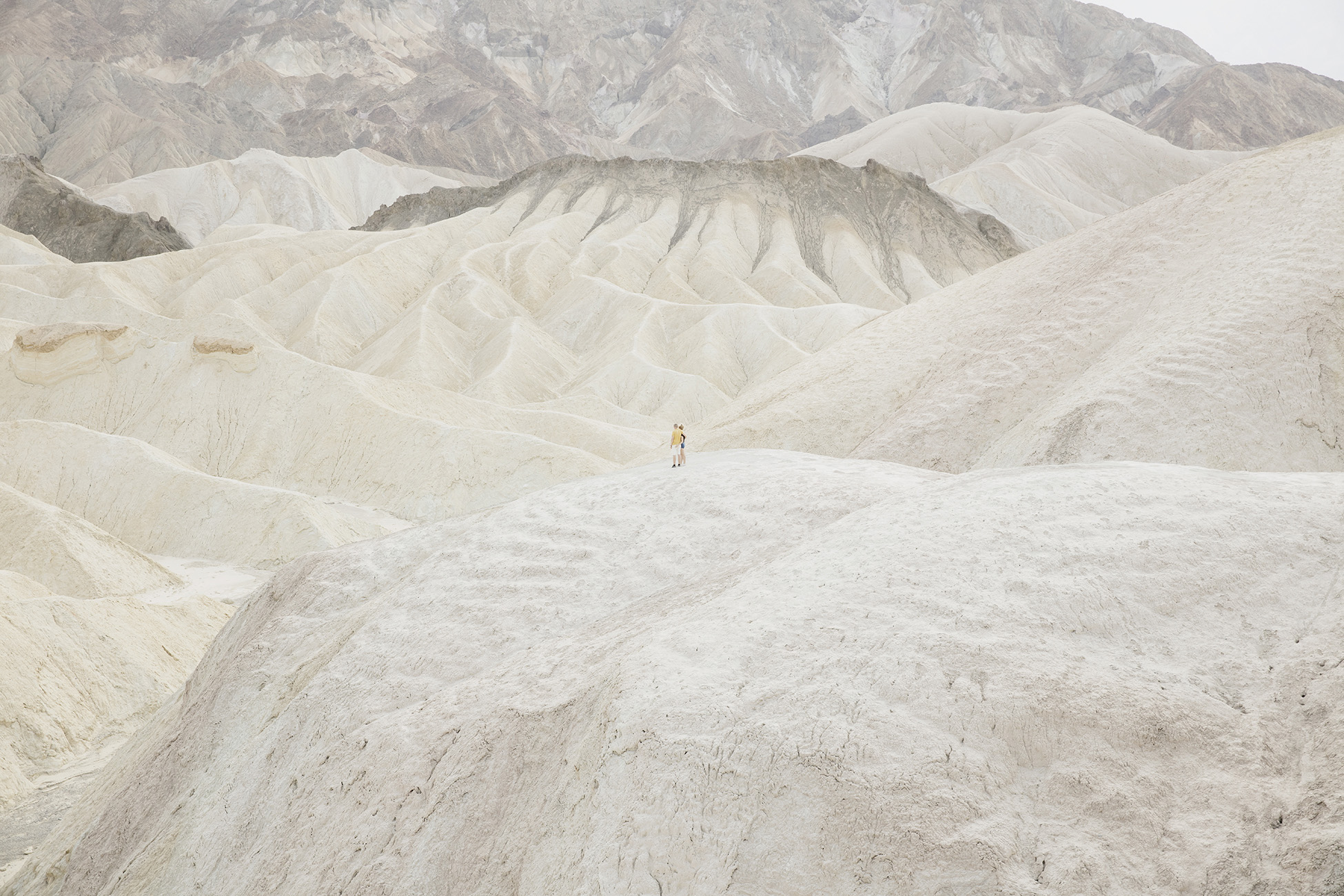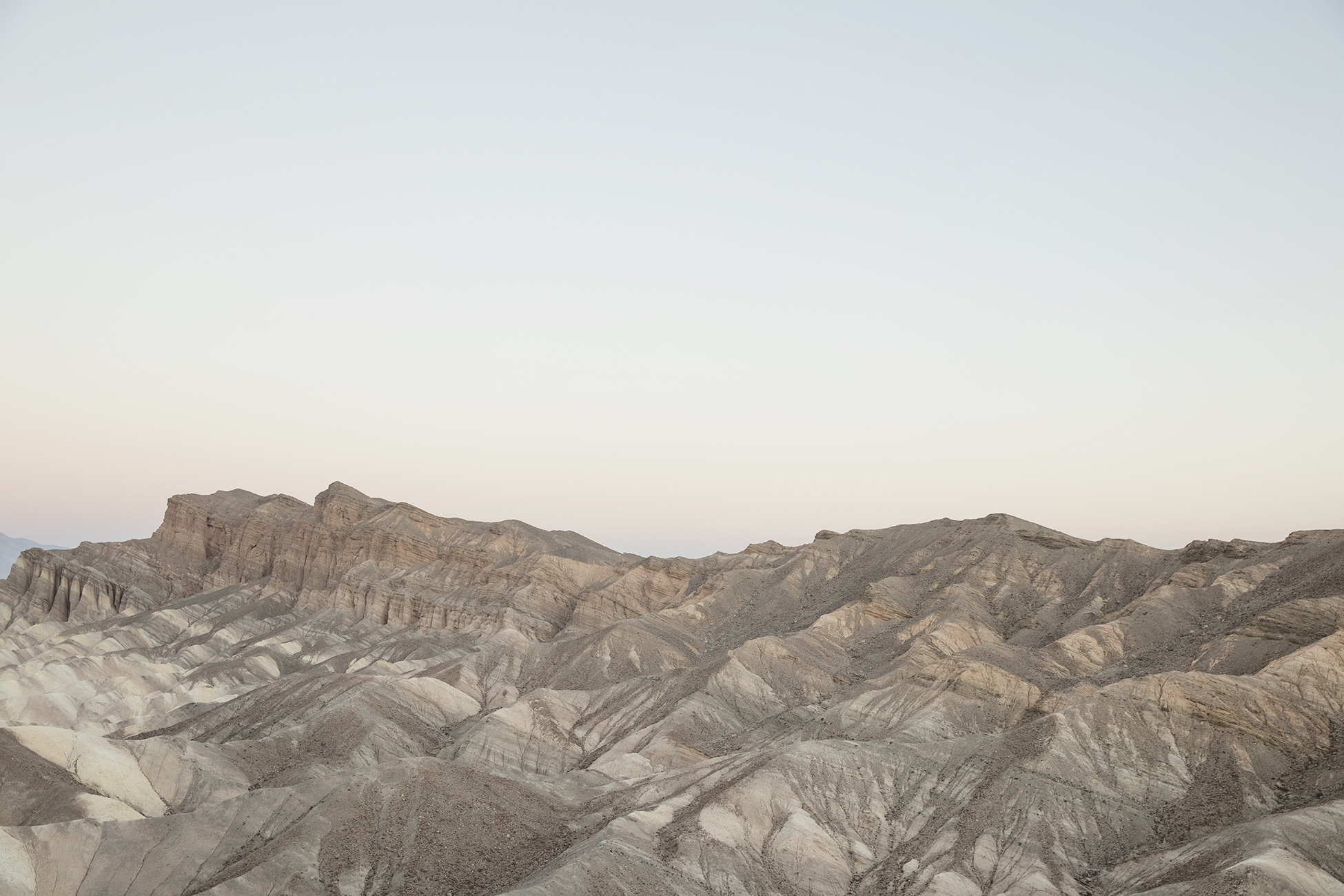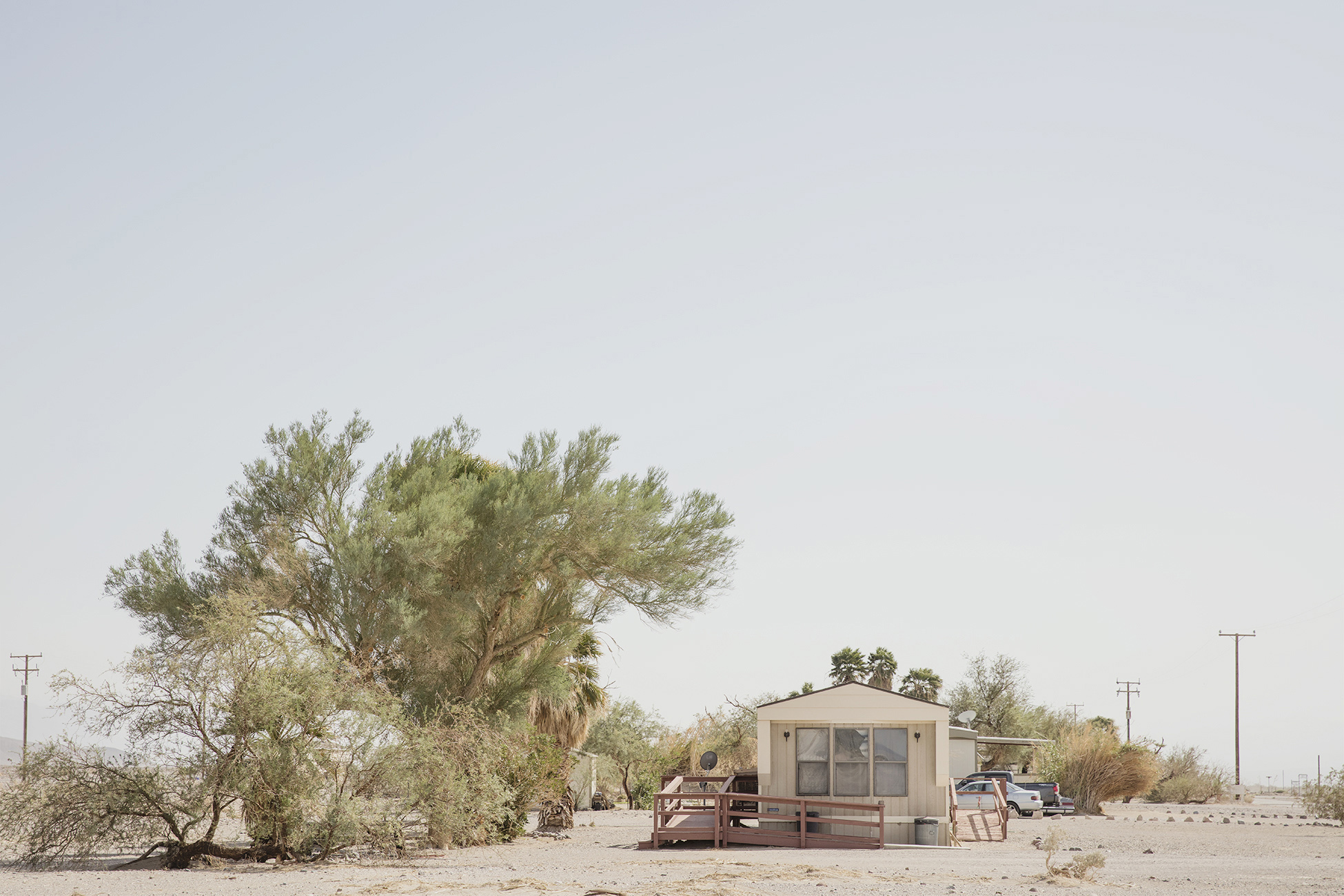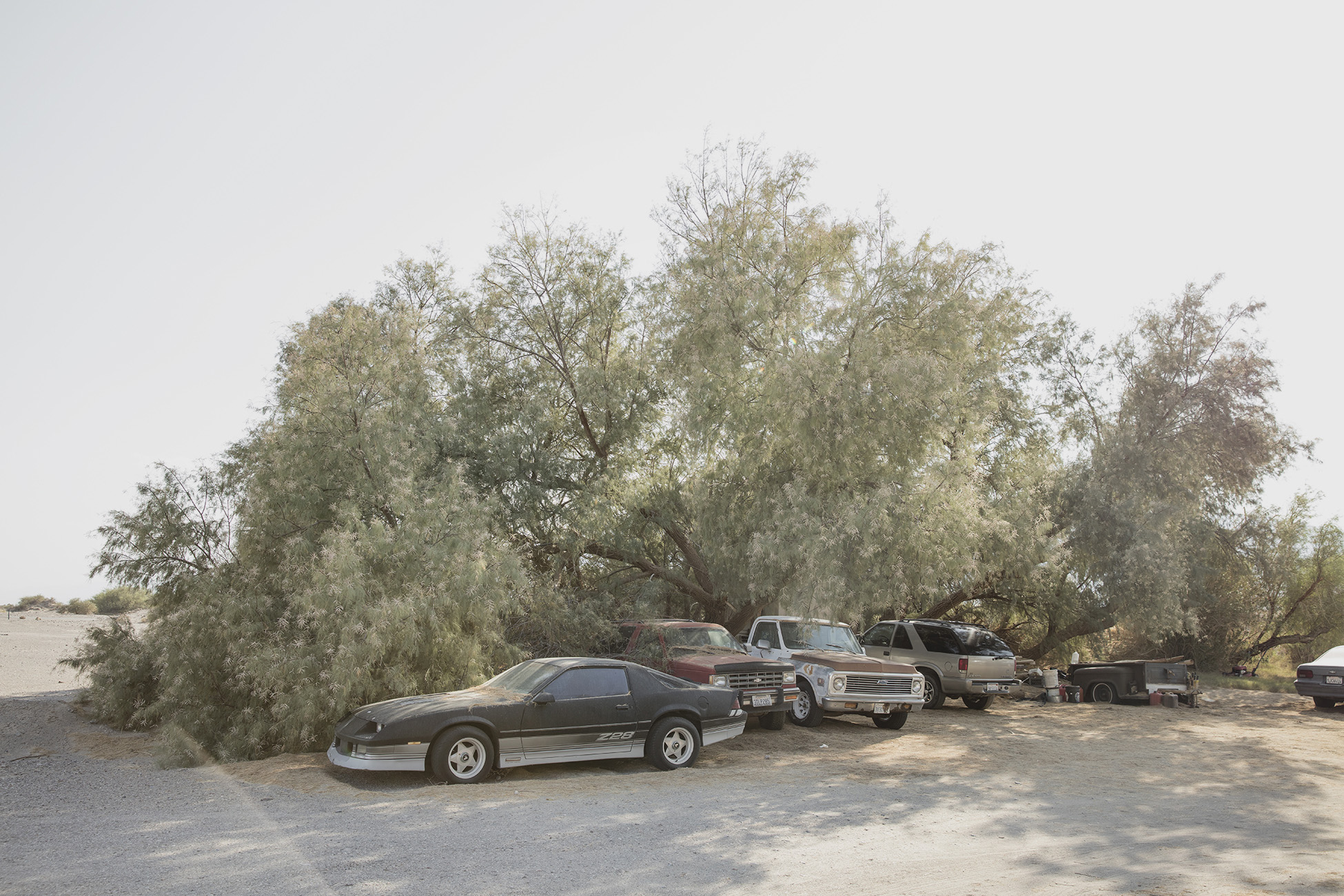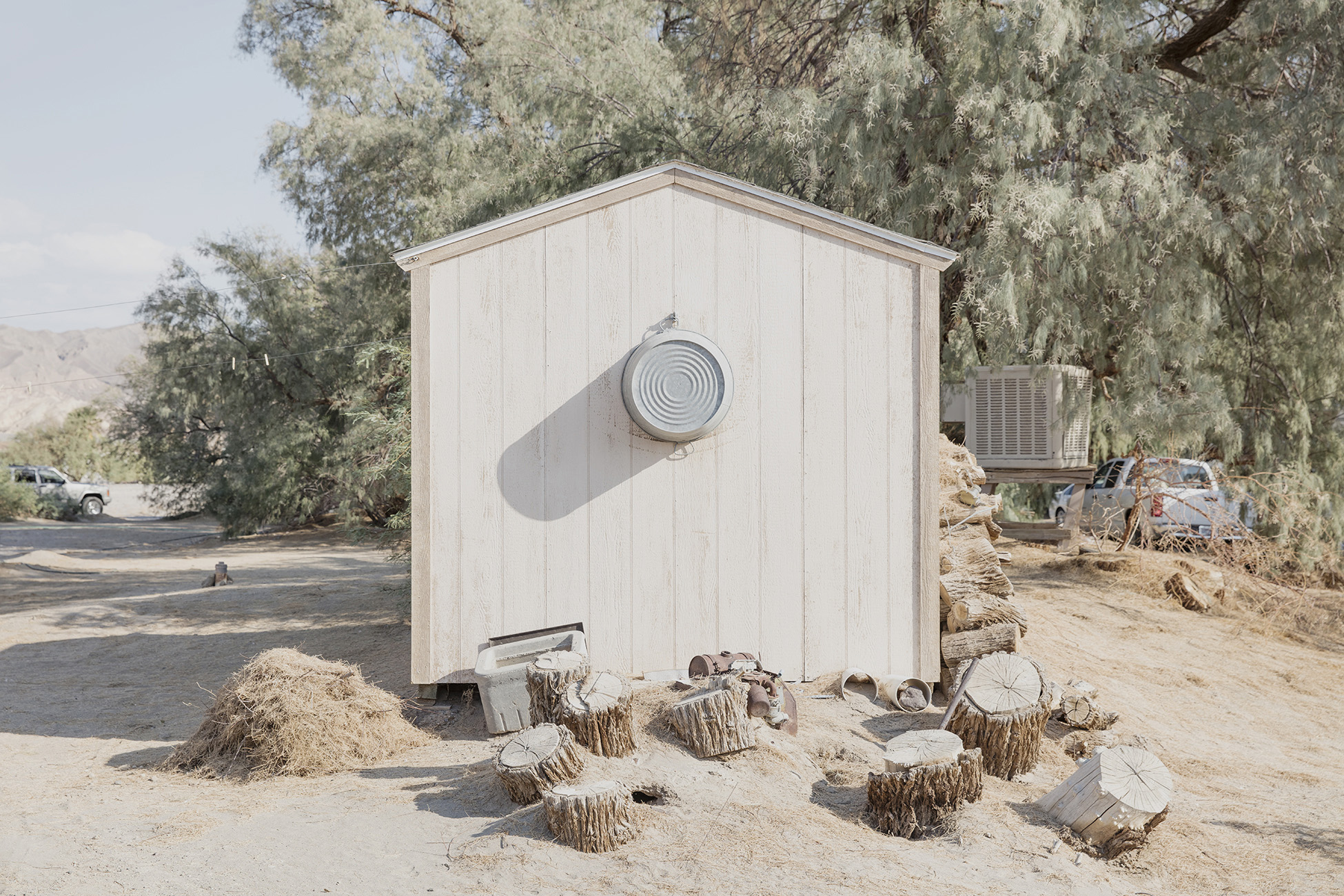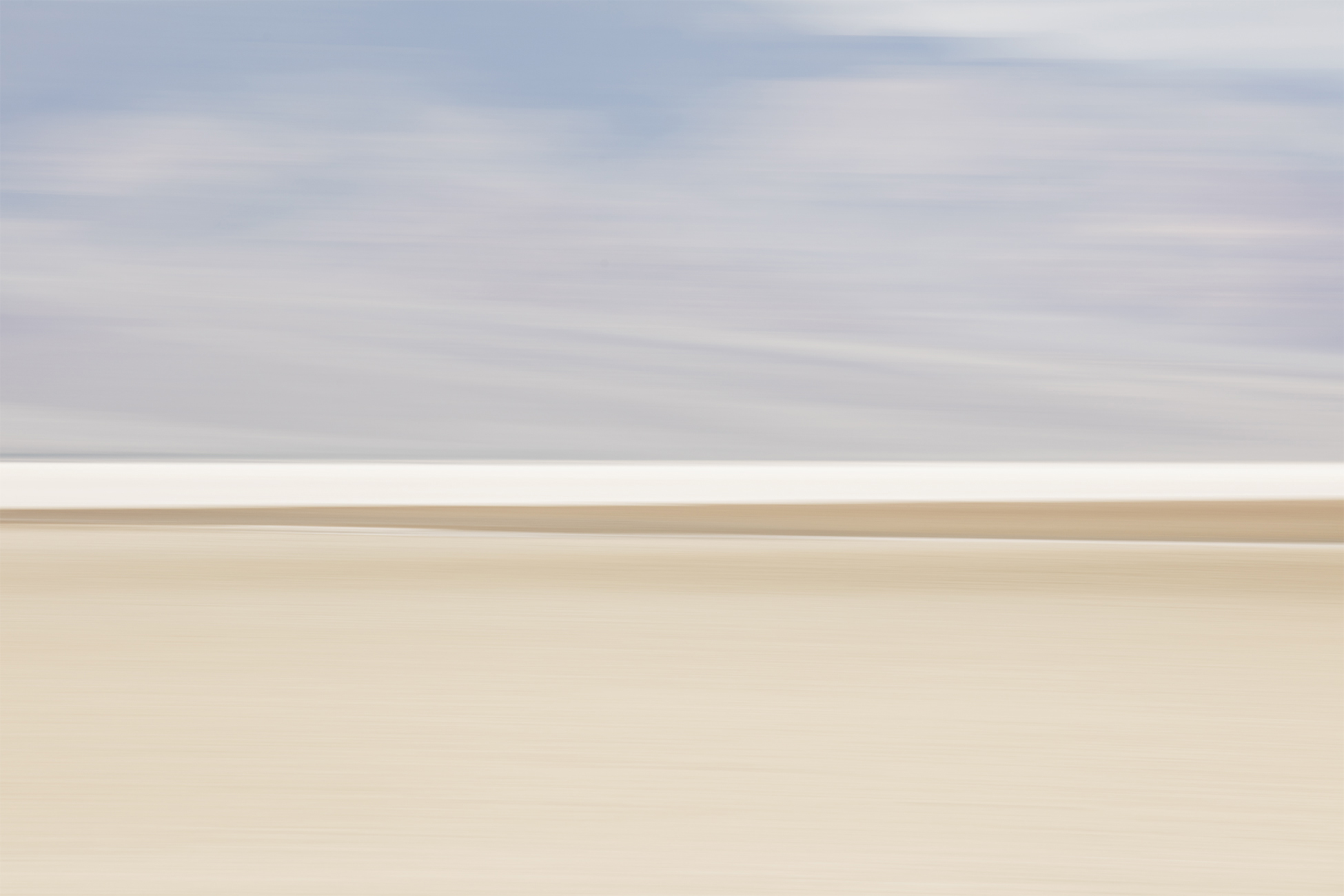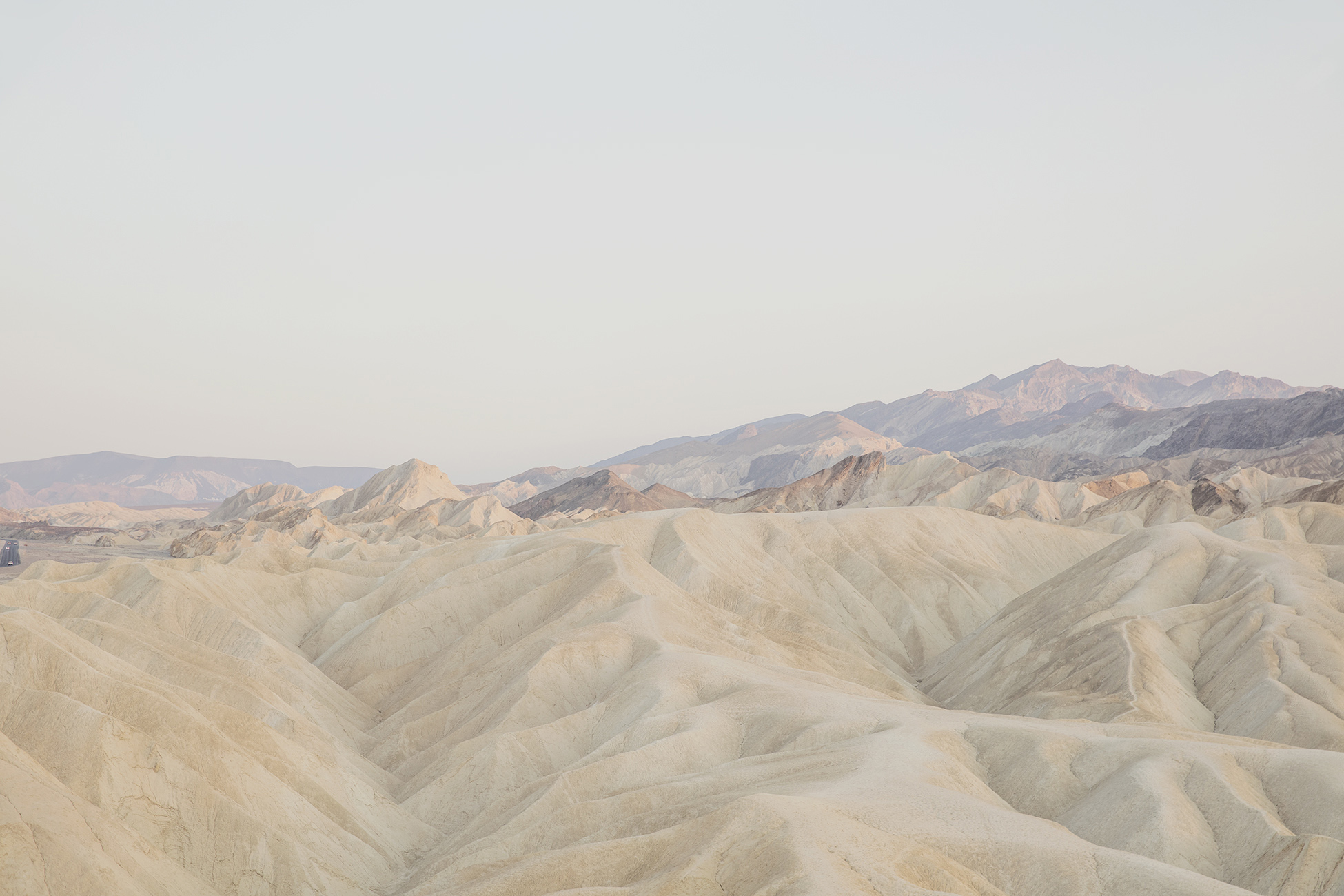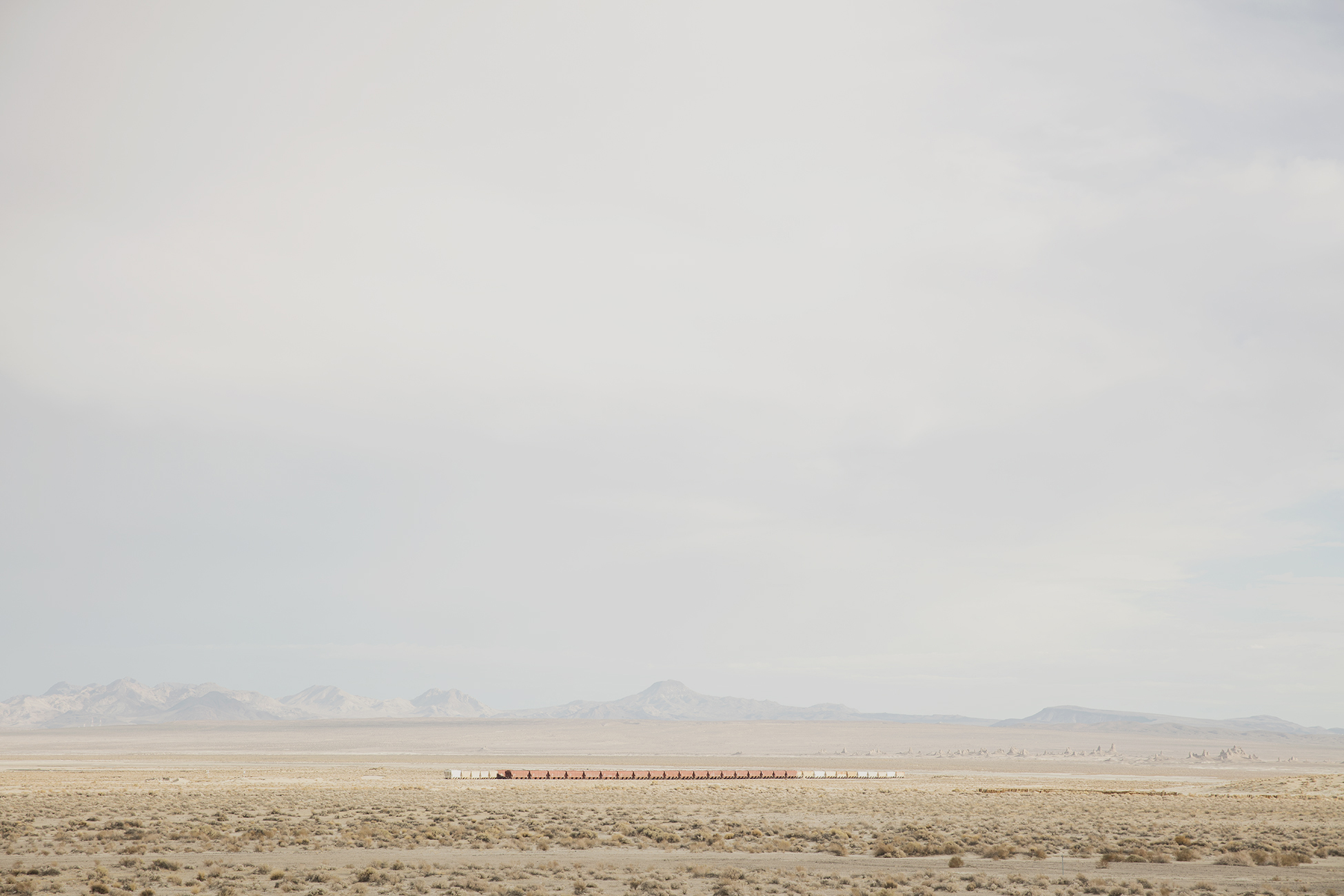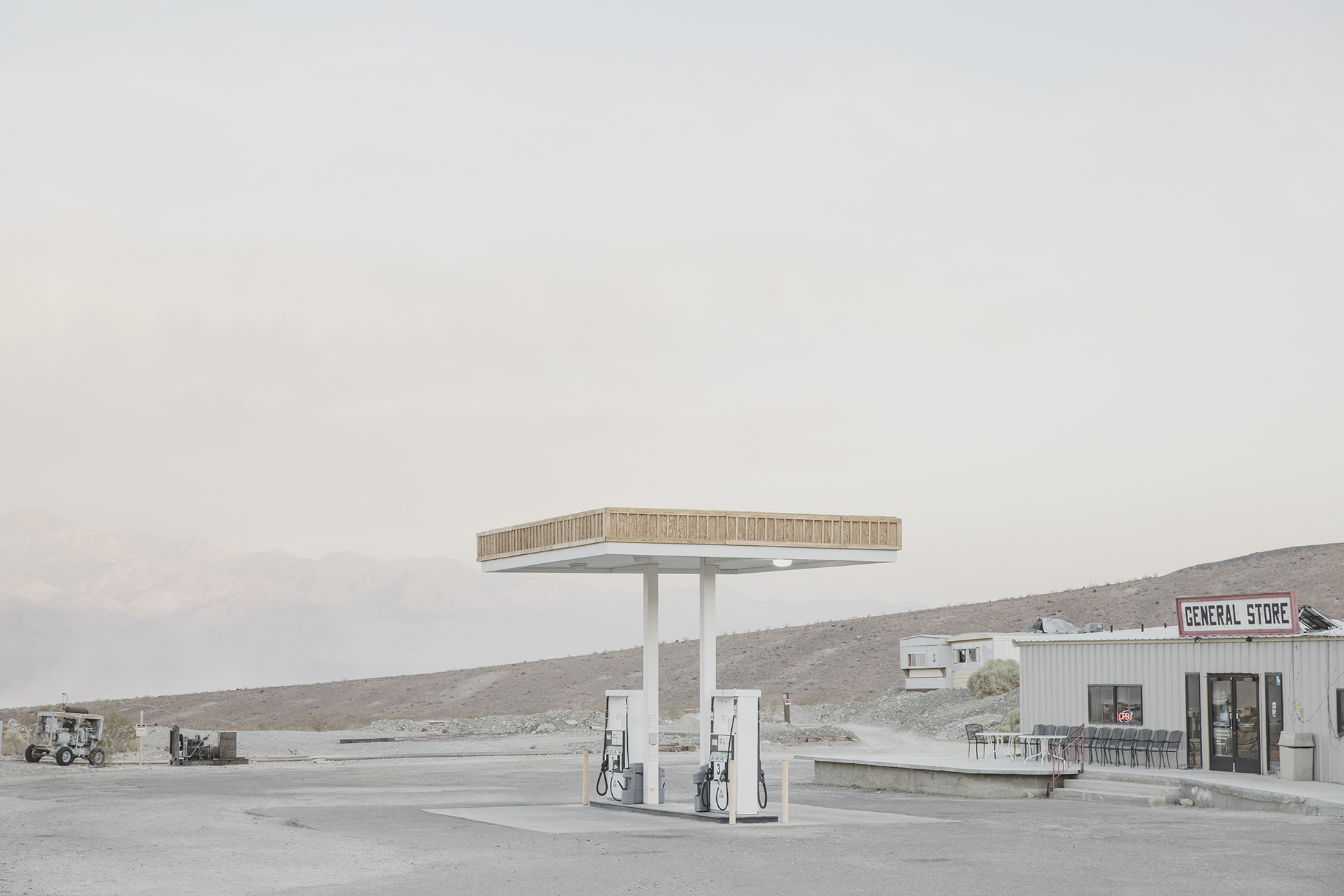One of the hottest places on earth, the desert takes its name from the era of the Gold Rush and the early pioneers who perished trying to cross its inhospitable expanses. Individual works, such as Carriages, near the Trona Pinnacles, offer a 21st century window on our forefathers determination to traverse this extreme landscape.
These days the area is better known for its remarkable beauty – a beauty that attracts nearly 2 million visitors every year. Other photographs capture this new influx of tourists and wryly documents their interactions with the natural environment. The title of the series expresses both my desire to leave the well-travelled path and the irony of those who travel miles to reach this wild place only to take a quick photograph before climbing back into their cars.
Attuned to the contrast between this vast space and the tiny human presence, I photographed these visitors from a distance, often waiting hours for the perfect composition. Alongside images of day-tripping tourists we see images of roads that lead to nowhere, vast cargo trains track along the horizon and a gas station offers fuel and sustenance. The result emphasises the insubstantial and temporary nature of our existence in this ancient desert.
The presence of tourists creates other tensions. The lands of the Timbisha Shoshone tribe – only officially recognised after years of campaigning – sit just outside the wealthy tourist centre of Furnace Creek. After years of experience working with and photographing Indigenous Peoples in Brazil, Nicaragua and Honduras in numerous environments here I felt it was inappropriate to photograph the Timbisha Shoshone people without prior conversations. Their presence though is intimated by an image of their reservation, Cars on the reservation, and in their conspicuous absence within the landscape they call home.

